What’s happening with energy efficiency in existing and new residential homes?
The U.S. Department of Energy (DOE) is committed to improving the most popular model residential energy code by 30% by 2012 and moving to net zero energy homes by 2020. The first major step toward those goals is embodied in the 2009 International Energy Conservation Code® (IECC), which by various estimates is 12% to 15% more energy efficient than its 2006 predecessor. Key new provisions in the 2009 IECC include:
- Mandatory pressure testing of ducts
- Mandatory pressure testing of envelope leakage or visual inspection based on a defined checklist
- Requirement that 50% of all lamps be high efficacy
These changes not only move toward DOE’s goals for improving the code, but are beginning to make their way into state and local building codes, where they will become part of the new standard practices for improving energy efficiency in the residential building industry. In so doing, they will create the need for some new/enhanced inspections and require a new level of testing expertise.

Photo 1
Duct Testing
Prior versions of the IECC have required that ducts not installed within the thermal building envelope1be insulated and sealed, but not until the 2009 edition has there been a requirement that the air tightness be verified by testing. This testing requirement closes what many have considered a loophole in the code, but the new requirement has met some resistance in some places. In some jurisdictions considering adoption of the 2009 IECC questions have been raised:
- What will be the additional cost of this requirement?
- Who will be performing the tests?
- Who will be reviewing the test results?
- How many additional inspections could this involve?
As an example, College Place, Texas, adopted the 2009 IECC, but amended it to exclude this testing provision and only require a visual inspection of the ducts. However, other areas of the country, such as the state of Washington, have retained the new testing provision. Washington also made a couple of unique amendments to the provisions:
1. All testing must be done by a qualified technician. The minimum qualification requirement is documented attendance at a duct testing training course approved by the building official. The following existing training programs are recognized as equivalent to this requirement:
a. Performance Testing training for new construction
b. Performance Tested Comfort Systems (PTCS) training for existing homes and new construction
2. Duct systems must be designed, sized, and installed using recognized industry standards and International Residential Code® (IRC) requirements, so that calculated heating and/or cooling loads are delivered to each zone.
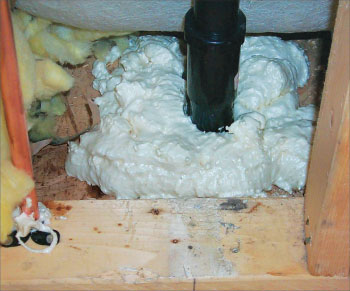
Photo 2. Air Sealing — Drain pipe with spray foam insulation
Since the adoption of Washington’s new code, which will become effective July 1, 2010, they have been providing training throughout the state to code officials, builders, architects and contractors on verifying duct air tightness. More information can be found athttp://www.energy.wsu.edu/code/default.cfm
What are the specific duct testing requirements of the 2009 IECC?
The 2009 IECC offers the builder quite a bit of flexibility in meeting its duct tightness requirements. The test can be done either immediately after rough-in of the ducts or later, after the home is completed. Testing at rough-in makes it easier to correct leaks without tearing down building components or using potentially more costly in-duct sealing equipment. Testing at home completion, on the other hand, allows testing the amount of leakage to outdoors rather than simply the total leakage, the theory being that leaks to the indoors are not as bad as leaks to outdoors.
The code leaves it to the local official to determine who must conduct the test. Some will allow the duct installer to do the testing on the theory that the installer can find and correct leaks more quickly and at less cost if s/he is the one doing the test. Others may require a third-party tester.
The specific test requirements are based on the flow rate of air at a specified pressure of 25 Pascals when register boots are sealed shut. The requirement is normalized by the size of the home and expressed per 100 ft2of conditioned floor area:
Post construction test
Maximum of 8 CFM/100ft2leakage to outdoors
–ORMaximum of 12 CFM/100ft2total leakage
Rough-in test
Maximum of 6 CFM/100ft2total leakage
– ORMaximum of 4 CFM/100ft2total leakage if air handler is not installed at the time of the test
Building Envelope Leakage Verification
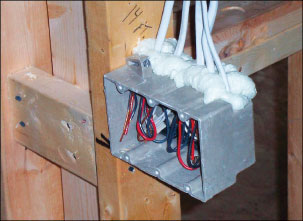
In adopting the 2009 IECC, Washington State amended the air sealing requirements to exclude the visual inspection option for new homes and any new addition greater than 500 square feet. The testing may be done by the builder or contractor, eliminating the need for an independent third party to run the tests. Builders who decide to do their own testing will need to purchase the equipment and train personnel. Eliminating the option for visual inspections reduces the labor required of the code official for inspections. Other states and jurisdictions that adopt the 2009 IECC will need to develop protocols and processes to confirm that proper air sealing has been demonstrated and meets the provisions of the code.
What are the new air sealing requirements in the 2009 IECC?
Testing Option– The specific test requirements are based on the flow rate of air produced by a “blower door” at a specified pressure of 50 Pascals when exterior doors are closed, dampers are closed but not otherwise sealed, exterior openings for continuous ventilation systems and heat recovery ventilators are closed but not sealed, HVAC systems are turned off, and duct supply and return registers are not covered or sealed. The requirement is expressed in air changes per hour (ACH), which takes account of the overall size (volume) of the home:
Total air leakage < 7 ACH (air changes per hour)
What is a blower door? It is a powerful fan that attaches and seals to the door (typically the entrance door to the home) and blows air into or out of the house to pressurize or depressurize the home. The inside-outside pressure difference will cause air to force its way through any cracks in the building thermal envelope. Measuring the flow rate at the specified test pressure gives an indication of the leakiness of the envelope.
Visual Inspection Option– building envelope tightness and insulation installation is considered acceptable when the items in Table 402.4.2 of the 2009 IECC, applicable to the method of construction, are field verified (see figure 1).
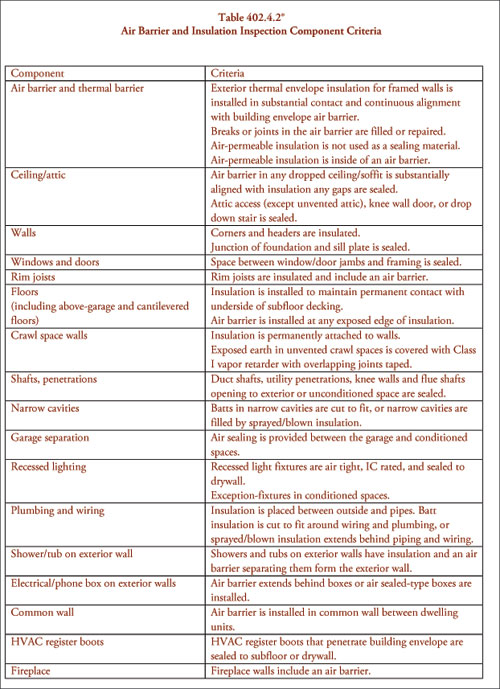
Figure 1. IECC-2009, Table 402.4.2 Air Barrier and Insulation Inspection Component Criteria
High Efficacy Lighting
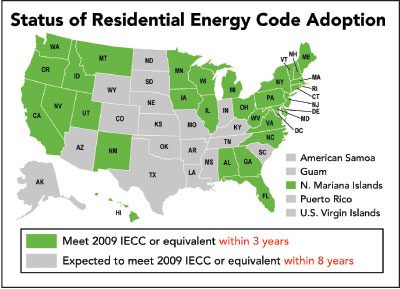
The 2009 IECC®, Chapter 2, defineshigh efficacy lampsas compact fluorescent lamps, T-8 or smaller diameter linear fluorescent lamps, or lamps with a minimum efficacy of:
60 lumens per watt for lamps > 40 watts,
50 lumens per watt for lamps > 15 watts and ≤ 40 watts, and
40 lumens per watt for lamps < 15 watts
Why pay attention to these new duct testing, air leakage, and lamp efficacy requirements in the 2009 IECC? Currently, fourteen states have officially adopted the 2009 IECC. Of these states, six will have an effective date in the latter part of 2010 or early 2011. Within the next three years, approximately thirty-three states will have adopted and implemented the 2009 IECC or something equivalent or more stringent, as shown in figure 2. As more states put these requirements in place, the number of your projects that may be affected is likely to increase. Becoming familiar with the new requirements now before they are required is likely a good approach to most effectively incorporating them into the building process.
References
12009 IECC®, Chapter 2, Definitions; Building Thermal Envelope – The basement walls, exterior walls, floor, roof, and any other building element that enclose conditioned space. This boundary also includes the boundary between conditioned space and any exempt or unconditioned space.<
22009 IECC®, Chapter 2, Definitions; Air Barrier – material(s) assembled and joined together to provide a barrier to air leakage through the building envelope. An air barrier may be a single material or a combination of materials. 2009 IECC®, Chapter 2, Definitions; Building Thermal Envelope – The basement walls, exterior walls, floor, roof, and any other building element that enclose conditioned space. This boundary also includes the boundary between conditioned space and any exempt or unconditioned space.







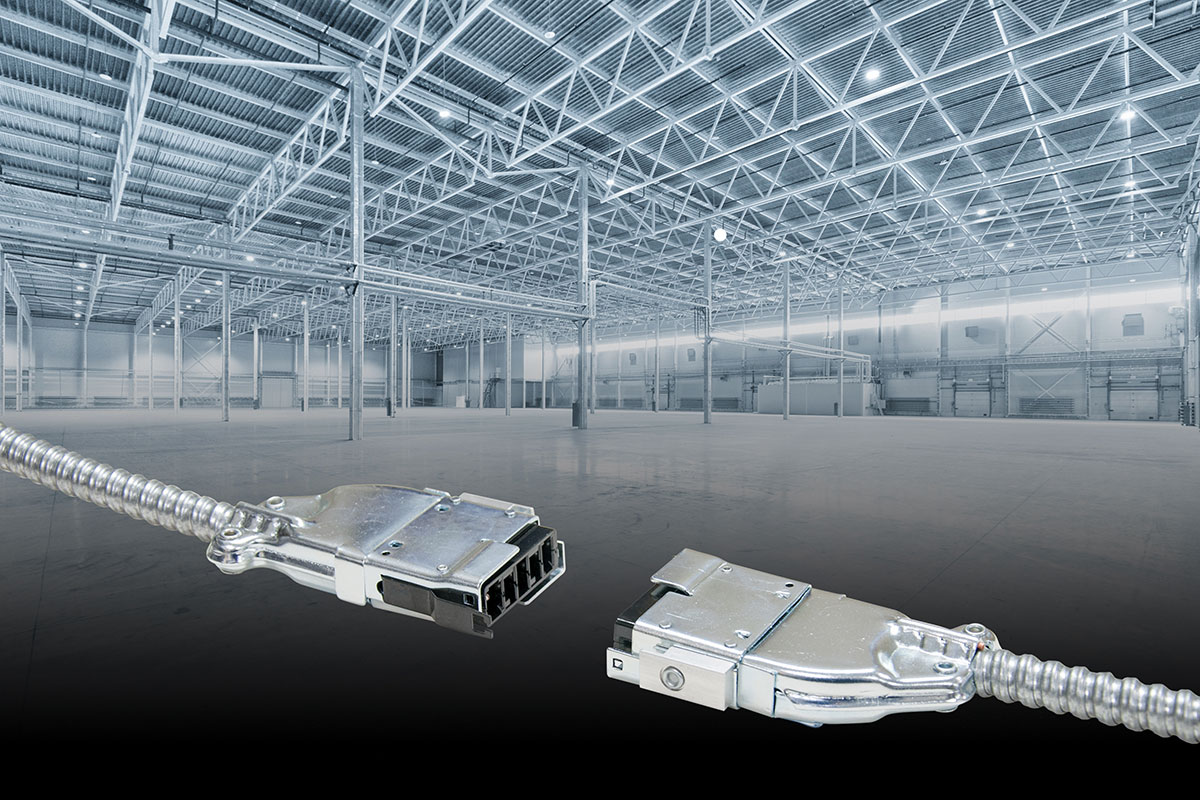

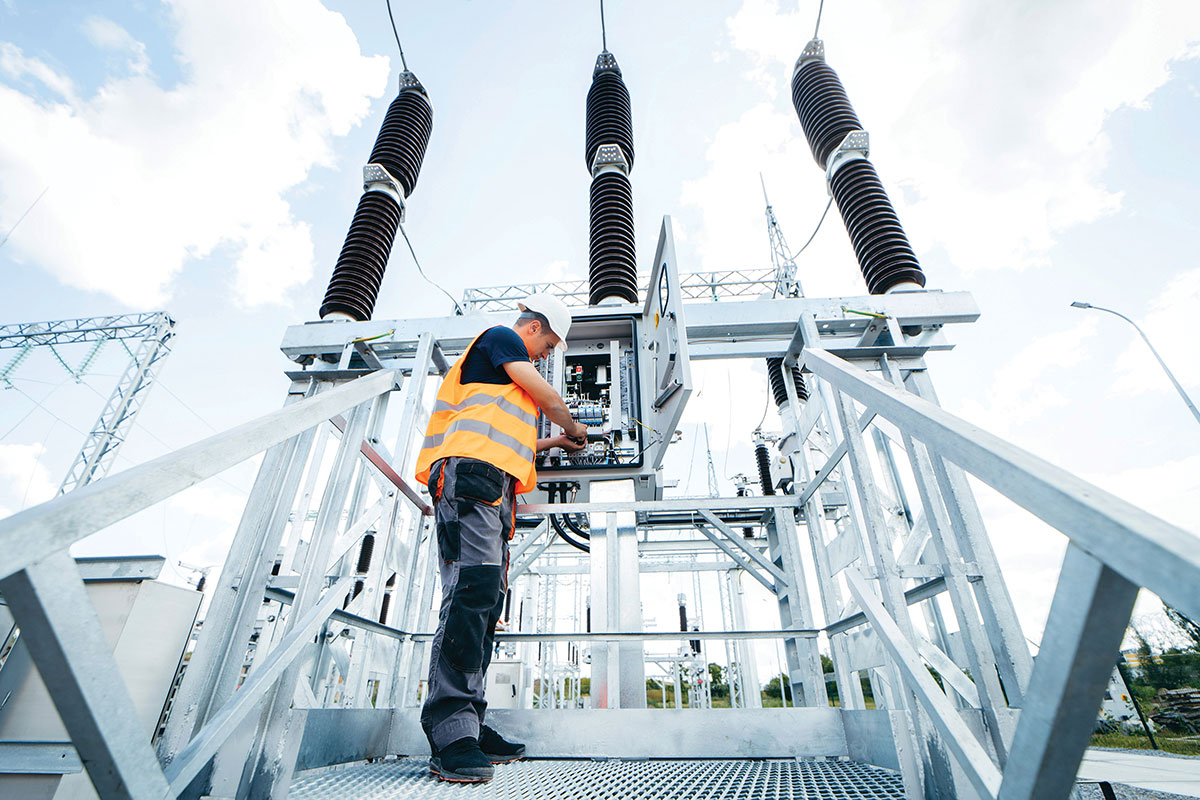
Find Us on Socials